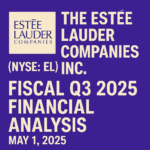Magnera Corporation (MAGN) Stock Analysis
Magnera Corporation (MAGN) Stock Analysis
Market Capitalization: $795.53 M
Shares Outstanding: ~35.34 M
Sector: Industrials / Manufacturing (assumed)
Analysis as of: February 15, 2025
1. Company Overview
Magnera Corporation (NYSE: MAGN) operates in the industrial manufacturing and supply segment.
Key Business Observations
1. Revenue Base: Over $2 B in annual sales, but with declining top-line growth (-15.45% YoY in the latest quarter).
2. Profitability Challenges: Negative net income (loss of -$206 M TTM) and low operating margins.
3. Restructuring & Impairments: The presence of merger, restructuring charges, and goodwill impairment suggests a period of organizational realignment or acquisition integration.
2. Financial Performance
a. Revenue & Growth
- TTM Revenue: $2.37 B
- YoY Revenue Growth (Q1 2025): -15.45%
- Historical Trend:
- Q1 2025 vs. prior year: -15.45%
- Q4 2024 vs. prior year: -22.64%
Analysis:
- Downward Trend: Revenue has declined sequentially, reflecting either soft market demand, strategic divestments, or heightened competition.
- Potential Stabilization: The revenue base near $2 B suggests scale, but negative growth remains a concern.
b. Profitability
- Net Income (TTM): -$206 M
- EPS (TTM): -$5.82
- Profit Margin (TTM): -8.69%
- Return on Equity (ROE): Not explicitly calculated (negative net income).
Analysis:
- Consistent Losses: The company has posted negative net income, signaling operational inefficiencies or heavy restructuring costs.
- Heavy Restructuring/Impairments: Large one-time charges (e.g., -$171 M goodwill impairment) significantly impact net income.
c. Margins
- Gross Margin: 11.22%
- Operating Margin: 3.08%
- EBITDA Margin: 10.84%
- Free Cash Flow Margin: 3.76%
Analysis:
- Thin Gross Margin: 11.22% is relatively low, possibly due to commodity or raw material costs, or a pricing environment that constrains margin expansion.
- Limited Operating Margin: 3.08% indicates modest profitability from core operations before interest and unusual items.
d. Cash Flow
- Operating Cash Flow (TTM): $161 M
- Capital Expenditures (TTM): -$72 M
- Free Cash Flow (TTM): $89 M
- FCF Margin: 3.76%
Analysis:
- Positive FCF: Despite net losses, Magnera manages to generate positive free cash flow, hinting that certain non-cash charges (e.g., impairments, depreciation) weigh on net income but not on cash flows.
- Capex Levels: $72 M in capital expenditures suggests moderate reinvestment in manufacturing or supply chain assets.
3. Balance Sheet
- Cash & Equivalents: $215 M
- Total Debt: $2.07 B
- Net Cash Position: -$1.86 B (or -$52.52 per share)
- Equity (Book Value): $1.11 B (Book Value Per Share: $31.24)
- Working Capital: $792 M
- Debt/Equity: 1.87
Analysis:
- High Leverage: A debt-to-equity ratio near 1.87 indicates substantial financial leverage.
- Negative Net Cash: The firm carries a net debt position of -$1.86 B, reflecting a leveraged capital structure.
- Adequate Current Ratio: 2.45 suggests short-term obligations are covered, but the large debt load remains a concern.
4. Valuation
- Stock Price (approx.): $21.98 – 23.16 intraday range
- Market Cap: $795.53 M
- PE (TTM): Not applicable (negative earnings)
- Forward PE: 152.61 (suggests expectations of near-breakeven or small net income)
- PS (TTM): 0.34
- PB (TTM): 0.72
- EV/EBITDA: ~10.32
- EV/FCF: ~29.79
Analysis:
- Below Book Value: PB of 0.72 typically indicates the market is discounting the company’s net assets, possibly due to concerns about profitability or intangible asset overhang.
- Forward PE of 152.61: Implies the market expects minimal net income in the near term, or that analysts anticipate a return to profitability but with very small margins.
5. Market Performance
- 52-Week Range: $15.86 – 29.77
- 52-Week Price Change: -20.57%
- Beta: Not provided, presumably lower or not available.
- Average Volume: ~618,253 (20-day)
Analysis:
- Under Pressure: The stock has declined ~20% over the past year, reflecting ongoing losses and uncertain turnaround prospects.
- Trading Below Mid-Range: Currently near the lower half of its 52-week range.
6. Financial Health and Risks
a. Liquidity & Leverage
- Current Ratio: 2.45 (comfortable short-term liquidity).
- High Leverage: Debt/Equity of 1.87, Debt/EBITDA near 8.06, indicating potential difficulty if operating income or EBITDA declines further.
b. Operational & Market Risks
- Negative Earnings: Ongoing net losses require successful restructuring or cost optimization to return to profitability.
- Impairment & Restructuring Charges: Could signal deeper issues with acquired businesses or overall strategy realignment.
- Margin Pressure: Thin gross margin (11.22%) offers limited buffer against cost inflation or demand swings.
c. Profitability & Cash Flow
- FCF Positive: The company still generates positive free cash flow, albeit at a modest 3.76% margin.
- Cost Controls Essential: Achieving profitability likely depends on managing COGS and SG&A effectively while stabilizing revenue.
d. Macroeconomic Factors
- Industrial Cycles: As a manufacturing-oriented firm, Magnera’s fortunes may correlate with global economic cycles, commodity prices, and supply chain disruptions.
7. Conclusion
Pros
1. Positive Free Cash Flow: Despite net losses, the firm manages to produce free cash flow.
2. Ample Current Liquidity: Current ratio of 2.45 indicates near-term financial flexibility.
3. Potential Turnaround: Restructuring efforts and goodwill impairments may set the stage for improved margins if revenue stabilizes.
Cons
1. Consistent Net Losses: -$206 M TTM net income, suggesting core profitability challenges.
2. High Leverage: Net debt of -$1.86 B, with a debt/equity ratio near 1.87, raises concerns about financial risk.
3. Declining Revenue: -15.45% YoY drop in Q1 2025 indicates weakening sales environment or market share erosion.
Disclaimer: This analysis is for informational purposes only and does not constitute investment advice. Investing involves risks, including the potential loss of principal. Past performance does not guarantee future results. Always consult a qualified financial advisor before making any investment decisions.





